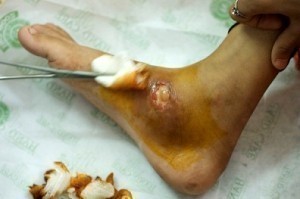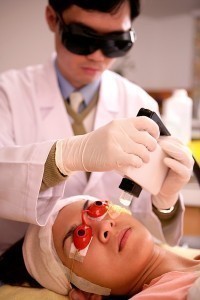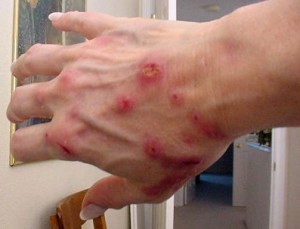What Causes Strawberry Birthmarks?
The Strawberry birthmark also known as Strawberry Hemangioma is a common type of birthmark. It occurs as a tumor of cells called endothelial cells which line the blood vessels, are benign and multiply abnormally fast. Strawberry birthmarks usually occur at birth, a few weeks after birth, or they may be congenital; and will completely regress by the time a child gets to age ten leaving little sign of prior existence. The birthmark is generally more common in fair-skinned females, and in Caucasians, but rare in Asian and African-American infants.
Strawberry birthmarks occur mostly in the neck and head regions, but can also emerge in the trunk, arms or legs as well as other body parts. An infant may have one or several birthmarks at a time, spreading over the body or localized to one area. The birthmarks may just appear on the surface of the skin and are raised and bright red in color, or they may be deeper in the skin tissues and have a bluish-purple color because the abnormal vessels are deeper under the skin.
Some birthmarks usually disappear without any form of treatment. There are cases where a rapidly growing hemangioma forms a sore or ulcer which can become infected and painful. Parents should consult with a dermatologist or doctor to find out the best course of treatment. Hemangiomas may also be cumbersome if they appear in areas such as on the eyelids or near the eyes, in the nose or mouth, or near the genitals or rectum.
The treatment for strawberry birthmarks includes the use of steroids administered by injection or orally, and lasers or both. Lasers are used in special cases more so in superficial hemangiomas where the capillaries that form the birthmark are carefully burned. This accelerates their regression process.
Causes of Strawberry Birthmarks
There is no distinct or known cause of strawberry birthmarks, though their existence is usually associated with folklore. There are however, some cases where the birthmarks are inherited, but this occurrence is uncommon. It is known that the occurrence of the birthmark is due to an abnormal growth of blood cells as the fetus grows, resulting from localized imbalance in factors controlling the development of blood vessels. They are tiny capillaries which is what gives the red color.
Genetics
There is possibility that some birthmarks may occur because of genetic factors as reported cases reveal their occurrence in a family’s history.
Premature Birth
Studies also reveal that “low birth weight is the most significant factor for the development of infantile hemangiomas”.
Oxygen Depletion in Placentas
Researchers (The Pediatric Dermatology Journal) conducted tests where placental samples were taken from a mixture of pregnant women that had premature births and normal births. The tests revealed a high ratio of low birth newborns that had developed hemangioma which may have been caused from reduced oxygen to the placenta.






